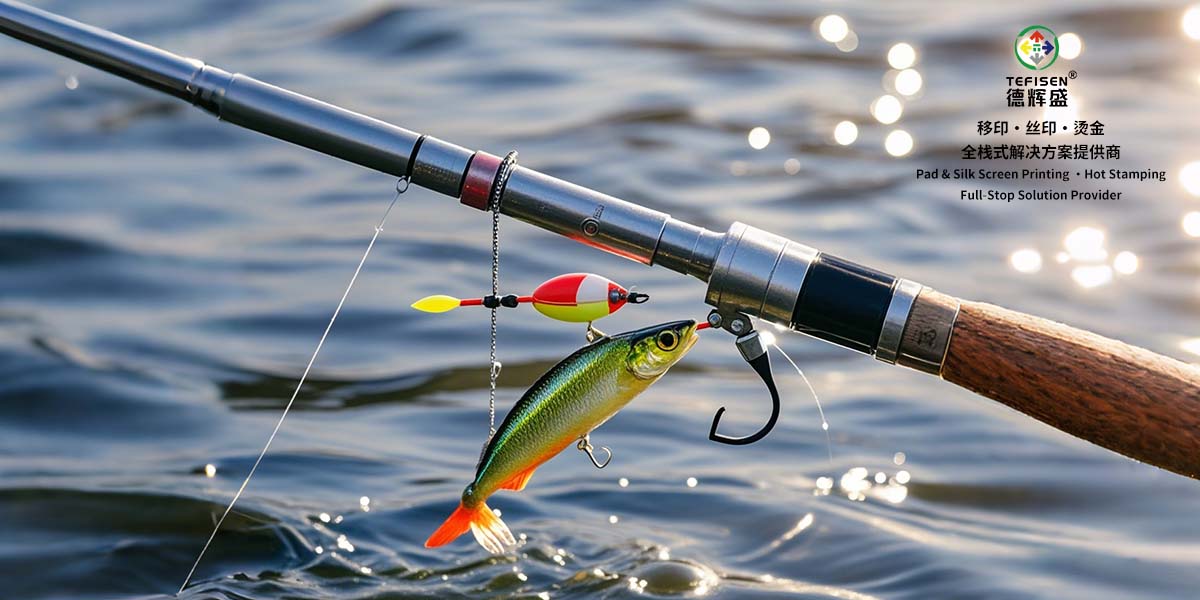Pad Printing Technology and Market Trends in the Chinese Fishing Tackle Industry
【Summary】The application of pad printing machines in the fishing tackle market, such as for fishing rods, floats, lures, fishing accessories, and clothing, is especially prominent in the bionic gradient color printing of fishing lures. According to relevant data, the Chinese fishing tackle market reached 15 billion RMB in 2023 and is expected to surpass 20 billion RMB by 2028. With the rising demand for personalization and sustainability, pad printing technology will see broader applications, especially in smart fishing tackle products.
I. Case Study of Pad Printing Machines in the Fishing Tackle Market
1. Diverse Demands and Technical Challenges in the Fishing Tackle Market
As the number of fishing enthusiasts continues to grow globally, the fishing tackle market has expanded, especially in regions such as Asia, Europe, and North America. Modern fishing tackle not only needs to meet functional requirements but also emphasizes aesthetics and personalization. Fishing rods, floats, lures, and other products increasingly focus on design details and branding, making printing technology crucial in the fishing tackle industry. Traditional silk screen and transfer printing methods face limitations when dealing with the diverse materials and complex surfaces of fishing tackle. In contrast, pad printing machines, with their ability to print on irregular surfaces, have gradually become key equipment in fishing tackle manufacturing.
2. Specific Applications of Pad Printing Machines in Fishing Tackle
Fishing tackle includes a wide variety of products, such as fishing rods, floats, and lures. These products are often made of different materials, have irregular shapes, and possess smooth surfaces that are easily damaged. The adhesion and durability of the printed results are crucial. Pad printing machines, with their high automation and strong adaptability, can achieve high-precision printing on different materials, ensuring clear and durable prints, making them ideal for mass production and personalized customization in the fishing tackle industry.
• Brand and Pattern Printing on Fishing Rods
o Fishing rods are typically made from high-strength carbon fiber or fiberglass materials, which have smooth and somewhat flexible surfaces. Pad printing machines can print brand logos, model numbers, and patterns on fishing rods using special inks. This method provides excellent abrasion resistance, ensuring that the brand markings remain clear even after prolonged use in water.
• High-Contrast Printing on Floats
o Floats are designed to be visible on the water's surface. To enhance visibility, bright colors and stripe patterns are often used. Pad printing machines can perform multi-color printing on floats, creating a variety of color combinations. Especially in nighttime fishing scenarios, the color registration technology of pad printing machines can accurately reproduce eye-catching color combinations, offering better visibility for anglers.
• Bionic Gradient Printing on Lures
o Printing on lures is particularly complex. Lures come in various shapes and are typically designed to mimic the color and patterns of real fish to attract fish. Through pad printing color registration technology, a bionic gradient effect can be achieved on lures, making the colors more vivid and realistic. This gradient effect not only enhances the visual appeal of the lures but also greatly improves their fish-attracting ability in the water.
3. Case Study: Application of TEFISEN TFS-CP2-160C Fully Automated Pad Printing Machine on Fishing Rods

A fishing tackle manufacturer introduced the TEFISEN TFS-CP2-160C fully automated pad printing machine for printing brand logos on their new line of fishing rods. The company wanted to print its brand logo, model, and other patterns on the fishing rod surface while ensuring that the print was clear, durable, and capable of withstanding long-term exposure to water.
• Technical Requirements
o The printed pattern must align with the streamlined design of the fishing rod, ensuring that the carbon fiber surface is not damaged during the printing process.
o The logo's color and edges must be clear, with strong adhesion to withstand friction and water exposure.
• Application Results
o The introduction of the fully automated pad printing machine greatly improved production efficiency. The brand markings on the fishing rods became clearer and more stable, eliminating the pattern distortion and misalignment issues commonly found in traditional printing methods.
o The increase in printing speed met the needs of mass production, and the automatic ink changing and cleaning systems saved a significant amount of labor.
4. Advantages of Pad Printing Machines in the Fishing Tackle Industry
• High Precision and Adaptability to Irregular Surfaces
o The high precision of pad printing machines enables them to print accurately on fishing tackle products with varying shapes and materials, ensuring the accuracy of patterns.
• Eco-Friendly Inks and Automatic Cleaning System
o Modern pad printing machines use eco-friendly inks that reduce pollution, while the automatic cleaning system makes the production process more efficient and environmentally friendly.
• Increased Production Efficiency and Product Consistency
o Fully automated pad printing machines greatly enhance production efficiency, ensuring the consistency of printed patterns, which is particularly suited to the mass production of fishing tackle products.
II. Chinese Fishing Tackle Market Analysis
1. Market Size in China
The Chinese fishing tackle market has been growing rapidly in recent years. According to statistics, the Chinese fishing tackle market size reached approximately 15 billion RMB in 2023 and is expected to continue growing at a compound annual growth rate (CAGR) of 5-6%, with the market size expected to exceed 20 billion RMB by 2028. This growth is mainly driven by the increasing number of domestic fishing enthusiasts and the rising popularity of online shopping and fishing tourism.
In terms of market segmentation, fishing rods, fishing lines, lures, and accessories make up the majority of the market. Among them, fishing rods and lures account for the largest share, about 60% of the total fishing tackle market, while the remaining 40% consists of fishing accessories (such as fishing rods, hooks) and fishing apparel.
2. Size of the Chinese Fishing Enthusiast Population
With the continued economic growth and rising living standards, fishing has become a popular recreational activity for many Chinese consumers. According to the China Fishing Association, the number of fishing enthusiasts in China reached 140 million by 2023 and is expected to continue growing, with an estimated 160 million fishing enthusiasts by 2025. Notably, the participation rate of younger people and urban professionals in fishing activities has been steadily increasing.
Of these, 30% are considered core fishing enthusiasts, meaning they engage in fishing at least once a month, and this group forms the main consumer force in the fishing tackle market, with a higher purchasing frequency and a preference for high-quality products. The remaining 70% are occasional anglers, whose demand mainly focuses on mid-to-low-end products.

3. E-Commerce Driving Market Growth
Chinese e-commerce platforms such as Tmall, JD.com, and Pinduoduo have provided crucial channels for the development of the fishing tackle market. In 2023, e-commerce sales of fishing tackle accounted for approximately 40% of the total market, amounting to 6 billion RMB. This proportion is expected to continue growing in the coming years, as the convenience and variety of online channels attract more consumers.
Among them, Tmall and JD.com dominate in the sale of mid-to-high-end fishing tackle products, while Pinduoduo holds a larger share of the low-to-mid-range market. Consumers benefit from the convenience of e-commerce platforms and enjoy discounts, which further promotes online shopping habits.
4. Domestic Production and Export
China is one of the world's largest fishing tackle manufacturers, with a large concentration of fishing tackle production companies in coastal provinces such as Shandong, Zhejiang, and Guangdong. In 2023, China's fishing tackle export value reached 5 billion RMB, accounting for about 30% of the global fishing tackle market share. Chinese-made fishing tackle products are exported to North America, Europe, Southeast Asia, and other regions, with rapid growth in the export of mid-to-high-end products.
5. Consumer Structure and Product Preferences
In terms of consumer structure, Chinese fishing enthusiasts prefer purchasing mid-to-high-end fishing tackle. In 2023, high-end fishing tackle products accounted for about 30% of total domestic sales, most of which were imported or well-known domestic brands, while mid-range products made up 50%, and low-end products represented 20%. This data indicates that as the fishing demographic upgrades, consumers are placing greater emphasis on the quality, functionality, and brand of fishing tackle.
6. Regional Distribution
Fishing tackle consumption is concentrated in coastal areas and economically developed central cities. According to 2023 data, fishing tackle consumption in coastal provinces such as Guangdong, Jiangsu, and Zhejiang accounted for about 40% of the total consumption, with Hubei, Hunan, Sichuan, and other central and western provinces accounting for 30%. These regions are seeing rapid development in the fishing tackle market, thanks to abundant water resources, higher economic levels, and a large number of fishing enthusiasts.
7. Future Trends
The future development trends of the Chinese fishing tackle market are mainly reflected in the following aspects:
• Personalization and Customization: With the increasing demand for personalized consumption, fishing tackle products are gradually shifting from standardization to personalized customization. Data shows that in 2023, the sales growth rate of personalized custom fishing tackle reached 15%, with consumers showing a preference for products that feature unique designs or meet their specific needs.
• Environmental Demand: As environmental awareness increases, the market demand for eco-friendly fishing tackle (such as biodegradable baits and environmentally friendly material fishing rods) is rising. It is expected that by 2025, the market share of eco-friendly fishing tackle products will increase to about 15%, gradually replacing some traditional material fishing tackle.
• High-tech Products: The introduction of smart fishing gear has brought a new experience to fishing, with high-tech products such as smart floats and electronic fish hooks being especially popular among younger consumers. It is expected that the smart fishing gear market will grow at an annual rate of more than 20% in the future.
• Offline Experience + Online Purchase: The combination of online and offline shopping is becoming a future trend. Many consumers choose to try products in physical stores before purchasing them through e-commerce platforms to enjoy better cost-effectiveness and a wider range of options.
III. Development Direction of Pad Printing Technology in the Fishing Tackle Industry
As competition in the fishing tackle market intensifies, the application of pad printing machines in the industry is moving toward greater intelligence and diversity. In the future, smart pad printing machines may be equipped with automatic adjustment functions to quickly adapt to different printing needs. Meanwhile, personalized customization will also become a trend in the fishing tackle industry, and pad printing machines will provide support for customized printing on personalized fishing gear.
• Personalized Production
Under customer demands, small-batch personalized printing can be achieved to add unique patterns and colors to fishing rods or baits.
• Environmental Upgrades
Future pad printing technologies will focus more on environmental protection, using non-toxic, biodegradable inks and low-energy printing processes to meet global environmental requirements.
The application of pad printing machines in the fishing tackle industry not only significantly improves production efficiency but also enhances the appearance and functionality of products. With pad printing technology, fishing rods, floats, baits, and other products have achieved exquisite patterns and gradient color printing effects, laying the foundation for brand building and enhancing market competitiveness.

